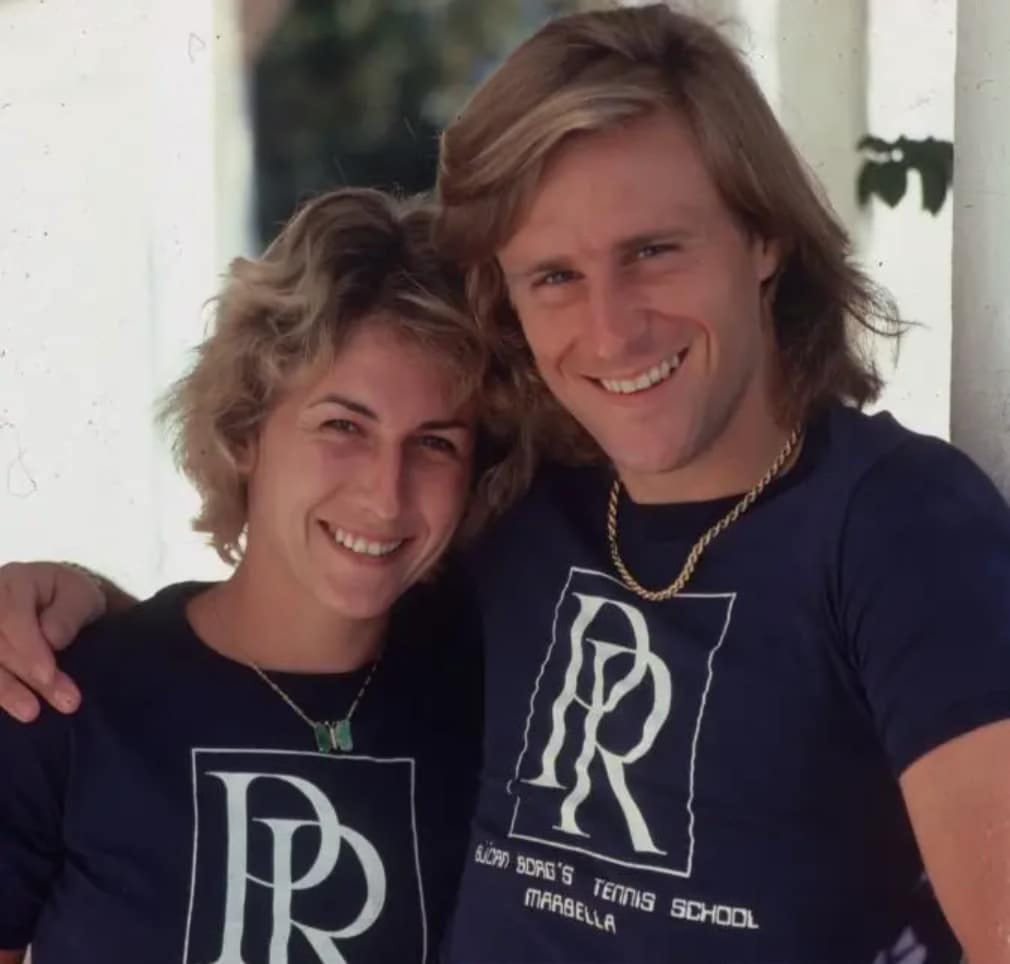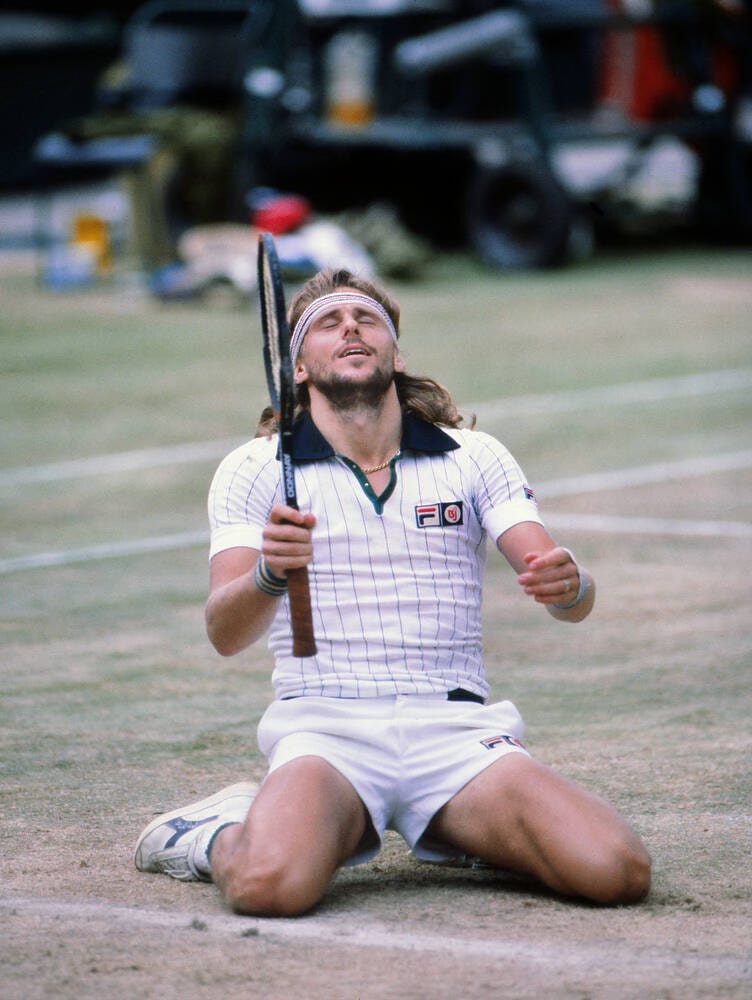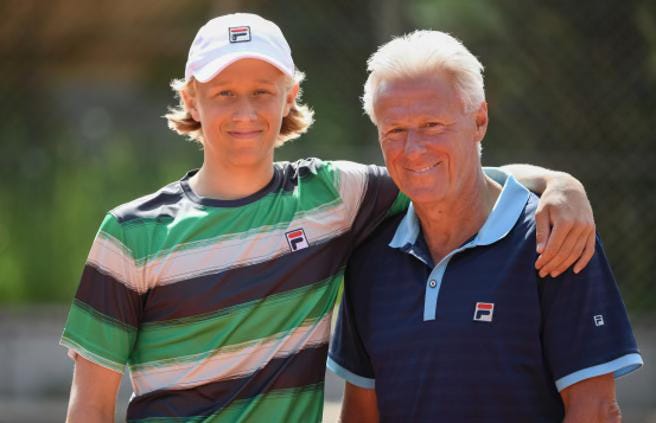“You have to find it. No one else can find it for you.”
— Björn Borg
In this Adorable Story, we explore the remarkable journey of Björn Borg, from his early triumphs in the tennis world to his lasting impact on popular culture.
Learn how Borg’s pioneering use of the two-handed backhand revolutionized the game, and understand the personal struggles that led to his early retirement.
We also highlight Borg’s influence beyond the court, from Wes Anderson’s The Royal Tenenbaums to his portrayal in the film Borg vs McEnroe by Sverrir Gudnason, and his iconic fashion brand.
If you aren’t subscribed yet, hit the subscribe button below to receive the Adorable Stories every weekend, directly in your inbox:
Early Life and Start of a Tennis Legend
Björn Rune Borg was born on June 6, 1956, in Stockholm, Sweden. His early fascination with the sport was sparked by his father Rune, who won a golden tennis racket at a table tennis tournament. This racket became young Borg’s prized possession, leading him to the sport that would define his life.
At the age of 15, Borg made his debut in the Davis Cup for Sweden, becoming the youngest player to win a Davis Cup match. His early promise was clear to all who watched him, marked by an unyielding focus and a calm demeanor that earned him the nickname “Ice Man.”
Early Career and First Major Triumphs
At 15 years old Borg made his presence known by winning the prestigious Orange Bowl in Miami over the American-Lithuanian Vitas Gerulaitis in the boys’ under-18 final.
Björn Borg’s professional career began in earnest in 1973.
His breakthrough came in 1974 when he won his first major tournament, the Italian Open (defeating Ilie Năstase), at just 17 years old. This victory was a precursor to his first Grand Slam title at the French Open later that same year.
Borg became in fact the youngest French Open champion in history, when he defeated Spain’s Manuel Orantes in devastating fashion after dropping the first two sets: 2-6, 6-7, 6-0, 6-1, 6-1.
Borg’s victory in Paris was particularly remarkable because he became the youngest French Open champion at that time, showcasing his extraordinary talent on clay.
In 1975, Borg continued to dominate the tennis scene, defending his French Open title successfully.
His relentless baseline play and powerful two-handed backhand made him a formidable opponent on any surface. These early triumphs laid the foundation for what would become one of the most illustrious careers in tennis history.
Career Highlights
“My greatest point is my persistence. I never give up in a match. However down I am, I fight until the last ball. My list of matches shows that I have turned a great many so-called irretrievable defeats into victories.”
—Björn Borg
By 1974, he had won his first Grand Slam title at the French Open and this victory was the first of six French Open titles, a record that stood for many years. Borg’s dominance on the clay courts of Roland Garros was matched only by his success on the grass courts of Wimbledon.
From 1976 to 1980, Borg won five consecutive Wimbledon titles. His epic rivalries, particularly with John McEnroe, are legendary.

The 1980 Wimbledon final against McEnroe — often cited as one of the greatest matches in tennis history — showcased Borg’s extraordinary mental and physical endurance.
Grand Slam Titles:
French Open: 1974, 1975, 1978, 1979, 1980, 1981
Wimbledon: 1976, 1977, 1978, 1979, 1980
In total, Borg won 11 Grand Slam singles titles.

Two-handed backhand
Albeit Björn Borg did not invent the two-handed backhand (players like Jimmy Connors and Chris Evert, among others, used it effectively before him), he popularized it and made it a significant weapon in modern tennis.
Borg’s adoption of the two-handed backhand, combined with his exceptional baseline play, brought a new level of consistency and power to the shot which became a key component of his game and helped him achieve numerous victories on various surfaces.
His success with this technique inspired many young players to adopt it, contributing to its widespread use in contemporary tennis we witness today.
Burnout and Struggles
By the early 1980s, the relentless pressure of competing at the highest level began to take its toll on Björn Borg.
Despite his outward calm, the intensity of his training and the constant demands of the professional circuit led to significant mental and physical fatigue.
Borg’s burnout became evident after his loss in the 1981 U.S. Open final to John McEnroe. Following this defeat, Borg’s passion for the game rapidly waned, and he started to withdraw from the sport.
Retirement and comeback
“When I retired from tennis I wanted to do other things with my life.”
— Björn Borg
In 1983, at just 26 years old, Borg shocked the tennis world by announcing his retirement.
He cited exhaustion and a desire to pursue other interests as his reasons for stepping away. Borg’s decision to retire so young was publicly discussed and widely speculated upon, with many believing that he had suffered a nervous breakdown from the immense pressure and expectations placed upon him.
Despite his early exit from professional tennis, Borg attempted a comeback in the early 1990s, but struggled to compete with the new generation of players.
After a few unsuccessful attempts to recapture his former glory, Borg retired from competitive tennis for good, focusing instead on his business ventures and personal life.
Despite his brief career, Borg’s impact on tennis was profound, changing the sport with his two-handed backhand and baseline play.
“I’m amazed that years after I stopped playing tennis, people still recognize me in restaurants and ask for my autograph.”
— Björn Borg
Personal Life
Borg has had a colorful personal life, marked by high-profile marriages.
1. Mariana Simionescu (1980–1984)
Borg married Romanian tennis player Mariana Simionescu in 1980. During their marriage, the couple primarily lived in Monte Carlo, Monaco.

2. Loredana Bertè (1989–1993)
Borg’s second marriage was to Italian singer Loredana Bertè, from 1989 to 1993. Loredana and Björn divided their life between Monaco and Italy, where their relationship was highly publicized.
3. Patricia Östfeldt (2002–Present)
In 2002, Borg married Patricia Östfeldt. Since then, the couple has primarily resided in Sweden, where Borg enjoys a quieter, more private life away from the limelight. They have a home in Stockholm and another in the Swedish countryside, allowing Borg to maintain a peaceful lifestyle.
Borg has two children: Robin, from a previous relationship with Swedish model Jannike Björling, and Leo (from Bjorn’s third wife, Patricia), who is following in his father’s footsteps as a promising young tennis player.
Impact on Popular Culture
Björn Borg’s influence extends far beyond the tennis court, permeating various aspects of popular culture.
Known for his distinctive style, cool demeanor, and sportsmanship, Borg has become a cultural icon whose legacy continues to inspire artists and filmmakers.
1. Wes Anderson’s Richie Tenenbaum
One of the most notable examples of Borg’s impact on popular culture is the character of Richie Tenenbaum from Wes Anderson’s film The Royal Tenenbaums (2001).
Played by Luke Wilson, Richie Tenenbaum is a former tennis prodigy who bears a striking resemblance to Borg. The character’s headband, long hair, and calm, introspective nature are clear nods to Borg’s iconic look and demeanor during his playing days.
Anderson openly acknowledged that Borg was a significant inspiration for Richie Tenenbaum, blending elements of the tennis star’s persona into the character’s design and backstory.
2. Books
Borg has co-authored autobiographies and memoirs detailing his life and career, including:
“Björn Borg: My Life and Game” (1980), offering a deep dive into his career and personal insights.
“Borg vs. McEnroe: The Greatest Rivalry” (2004), co-written with John McEnroe, which analyzes their legendary matches and provides their personal reflections on their respective careers.
3. Film
The 2017 movie Borg vs McEnroe dramatizes the intense rivalry between Borg and McEnroe (with Shia LaBeouf playing McEnroe), highlighting their contrasting personalities and the epic 1980 Wimbledon final. Actor Sverrir Gudnason portrays Borg in the film, capturing his stoic presence and the immense pressure he faced.
4. Fashion
Borg’s influence extends into the fashion world as well. His on-court style, characterized by headbands, wristbands, and Fila sportswear, became iconic.
The Björn Borg fashion brand, particularly known for its underwear line, reflects his stylish and cool persona. Today, the brand continues to enjoy popularity, blending athletic functionality with trendy designs.
Borg’s calm and composed demeanor under pressure has led to the term “Ice Man” becoming synonymous with unflappable coolness.
His influence can be seen in various aspects of modern sports culture, where athletes today still strive to emulate his mental toughness and focus.
Björn Borg’s impact on popular culture is vast and multifaceted. From inspiring film characters to influencing fashion and literature, Borg’s legacy as a tennis legend and cultural icon continues to resonate across different spheres of life.
—Alberto @
Do you know anyone who would love to read this Adorable Story? Show your support by sharing Adorable Times’ Newsletter and earn rewards for your referrals.










